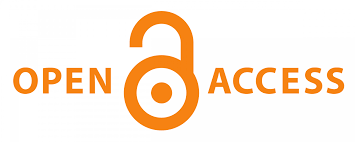Exploring the Role of Nurses in Maternal and Child Health Services in Bangladesh: Challenges and Opportunities
DOI:
https://doi.org/10.61561/ssbgjms.v6i02.108Keywords:
Nurses, midwives, MCHAbstract
Despite improvements in maternal and child health (MCH) indicators in Bangladesh, challenges persist in meeting Sustainable Development Goals, largely due to a critical shortage of nurses—only 4.3 per 10,000 population, well below the WHO’s recommended 25. This narrative review synthesized findings from 16 studies (2000–2023) accessed via PubMed, Google Scholar, Science Direct, and WHO repositories, focusing on the role and challenges of nurses in MCH services in Bangladesh. Ten peer-reviewed studies with various methodologies were analyzed thematically. Nurses were primarily involved in antenatal care (70%), delivery assistance (50%), postnatal care (40%), maternal counseling (40%), and immunization/newborn care (30%). Key barriers included limited training opportunities (60%), workforce shortages and heavy workload (50%), and inadequate healthcare infrastructure (50%). Despite these challenges, 80% of the studies documented effective nurse-led interventions, such as outreach clinics, home-based postnatal visits, and health education initiatives. Supportive policy frameworks—like the Community Clinic Strategy, Safe Motherhood Program, and revised nursing curricula—were identified as enablers of improved practice. Findings highlight that nurses play vital but constrained roles across the MCH continuum. With appropriate support, nurse-led initiatives significantly enhance maternal and child outcomes. Moving forward, implementation research, competency-based education reforms, and digital health solutions are essential to bridge policy-practice gaps and overcome geographic barriers. Strengthening the nursing workforce through strategic investment in education and policy execution is critical for advancing MCH outcomes in Bangladesh.
References
1. World Health Organization, “Trends in maternal mortality 2000 to 2020: estimates by WHO, UNICEF, UNFPA, World Bank Group and UNDESA/Population Division”. Available at: https://www.who.int/publications/i/item/9789240068759. Last Accessed- [06-04-2025]
2. You D, Bastian P, Wu J, Wardlaw T. United Nations Inter-Agency Group for Child Mortality Estimation: Levels and Trends in Child Mortality, Report 2013. New York: United Nations Children’s Fund. 2013.
3. Alam F, Hossain R, Ahmed HU, Alam MT, Sarkar M, Halbreich U. Stressors and mental health in Bangladesh: current situation and future hopes. BJPsych international. 2021 Nov;18(4):91-4.
4. The Financial Express, “Nurses in Bangladesh healthcare system: the unsung heroes”. Available at: https://thefinancialexpress.com.bd/views/views/nurses-in-bangladesh-healthcare-system-the-unsung-heroes-1663944155#google_vignette. Last Accessed- [06-04-2025]
5. Catton H. International Council of Nurses representing nursing at the World Health Organization: COVID‐19, policy and holding politicians to account. International Nursing Review. 2021 Sep;68(3):267-9.
6. Islam MI, Alam KM, Keramat SA, Murshid ME, Haque R, Kabir E, Khanam R, Khan MH. Working conditions and occupational stress among nurses in Bangladesh: a cross-sectional pilot study. Journal of Public Health. 2021 Jan 7:1-9.
7. Hossain J, Ahmed M, Akter A. Workers’ Rights in Bangladesh’s Care Economy: Decent Work and Deficits for Personal Care and Nonclinical Healthcare Workers. Karmojibi Nari. Retrieved on February. 2021;26:2022.
8. Nuruzzaman M, Zapata T, McIsaac M, Wangmo S, Islam MJ, Almamun M, Alam S, Talukder MH, Dussault G. Informing investment in health workforce in Bangladesh: a health labour market analysis. Human Resources for Health. 2022 Oct 12;20(1):73.
9. Sultana S, Hossain ME, Khan MA, Saha SM, Amin MR, Prodhan MM. Effects of healthcare spending on public health status: An empirical investigation from Bangladesh. Heliyon. 2024 Jan 15;10(1).
10. Scharff D, Enard KR, Tao D, Strand G, Yakubu R, Cope V. Community health worker impact on knowledge, antenatal care, and birth outcomes: a systematic review. Maternal and child health journal. 2022 Jan 1:1-23.
11. Nahian MA. Public health impact and health system preparedness within a changing climate in Bangladesh: A scoping review. Challenges. 2023 Jan 9;14(1):4.
12. UNICEF Bangladesh, "Disruptions in health services due to COVID-19. Available at: https://www.unicef.org/bangladesh/en/press-releases/disruptions-health-services-due-covid-19-may-have-contributed-additional-239000. Last accessed- [06-04-2025]
13. Wheeler KJ, Miller M, Pulcini J, Gray D, Ladd E, Rayens MK. Advanced practice nursing roles, regulation, education, and practice: A global study. Annals of global health. 2022 Jun 16;88(1):42.
14. Sukhera J. Narrative reviews: flexible, rigorous, and practical. Journal of graduate medical education. 2022 Aug 1;14(4):414-7.
15. Ferrari R. Writing narrative style literature reviews. Medical writing. 2015 Dec 1;24(4):230-5.
16. Dinet J, Favart M, Passerault JM. Searching for information in an online public access catalogue (OPAC): the impacts of information search expertise on the use of Boolean operators. Journal of computer assisted learning. 2004 Oct;20(5):338-46.
17. Gajjar D. Ethical consideration in research. Education. 2013 Jul;2(7):8-15.
18. Rafferty AM, Busse R, Zander-Jentsch B, Sermeus W, Bruyneel L. Strengthening health systems through nursing: Evidence from 14 European countries.
19. Sharma BB, Jones L, Loxton DJ, Booth D, Smith R. Systematic review of community participation interventions to improve maternal health outcomes in rural South Asia. BMC pregnancy and childbirth. 2018 Dec;18:1-6.
20. Scanlon A, Murphy M, Smolowitz J, Lewis V. Low‐and lower middle‐income countries advanced practice nurses: an integrative review. International nursing review. 2020 Mar;67(1):19-34.
21. Ahmed SM, Hossain MA, RajaChowdhury AM, Bhuiya AU. The health workforce crisis in Bangladesh: shortage, inappropriate skill-mix and inequitable distribution. Human resources for health. 2011 Dec;9:1-7.
22. Islam A, Biswas T. Health system in Bangladesh: challenges and opportunities. American Journal of Health Research. 2014 Nov 14;2(6):366-74.
23. Ahmed T, Rizvi SJ, Rasheed S, Iqbal M, Bhuiya A, Standing H, Bloom G, Waldman L. Digital health and inequalities in access to health services in Bangladesh: mixed methods study. JMIR mHealth and uHealth. 2020 Jul 21;8(7):e16473.
24. Muraraneza C, Mtshali GN. Planning reform to competency-based curricula in undergraduate nursing and midwifery education: A qualitative study. Nurse Education Today. 2021 Nov 1;106:105066.
25. McPake B, Koblinsky M. Improving maternal survival in South Asia—what can we learn from case studies. Journal of health, population, and nutrition. 2009 Apr;27(2):93.
26. Ohr SO, Cleasby P, Jeong SY, Barrett T. Nurse-led normalised advance care planning service in hospital and community health settings: a qualitative study. BMC palliative care. 2021 Dec;20:1-2.
Downloads
Published
How to Cite
Issue
Section
License

This work is licensed under a Creative Commons Attribution-NonCommercial 4.0 International License.










